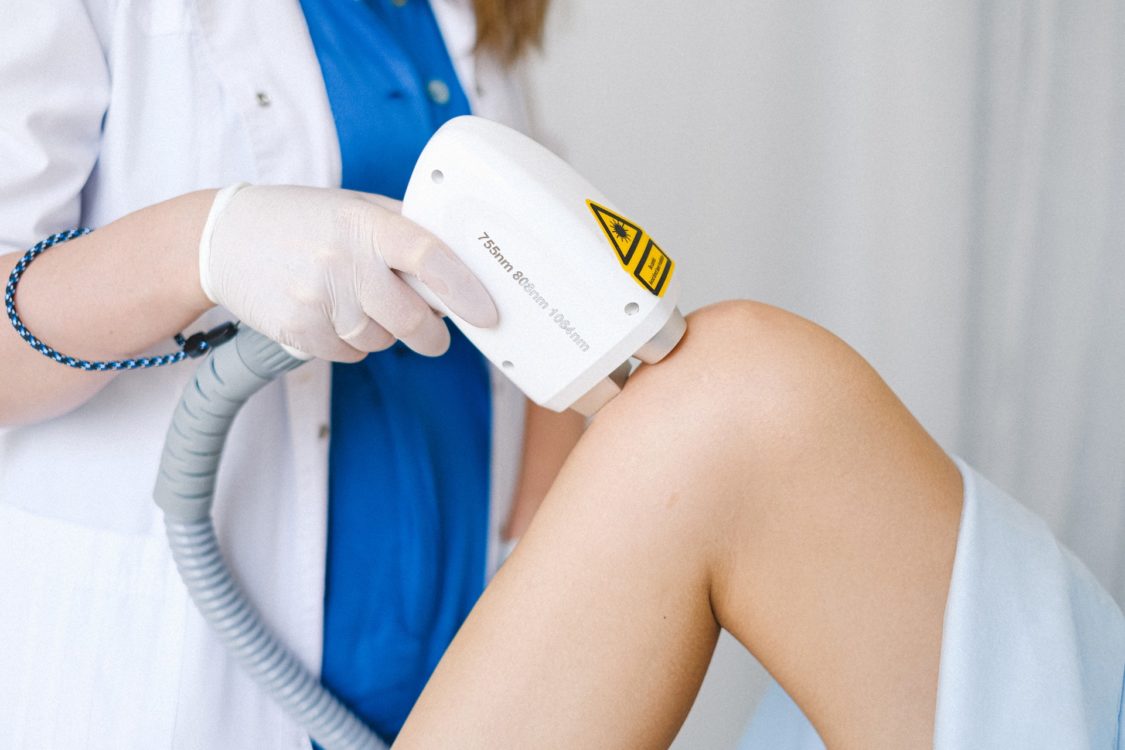Peripheral nerves are the nerves found outside your brain and spinal cord. Peripheral nerves connect body organs to the Central Nervous System (CNS) and pass communication between the CNS to the body organs. Peripheral neuropathy occurs when the peripheral nerves malfunction due to damage or destruction. Malfunctioning nerves send pain signals when there are no offending stimuli or fail to send pain signals when you are in harm’s way.
There exists many types of neuropathies each with a unique presentation and treatment options. Neuropathies can be classified according to the type of nerve damage involved and may be mononeuropathy or polyneuropathy. A mononeuropathy will suggest that a single nerve is damaged whereas a polyneuropathy occurs when more than one nerve is damaged. Neuropathies may be due to:
- Generalized diseases such as diabetes
- Injury
- Alcohol and toxins
- Infections and autoimmune disorders
- Medications
Laser Therapy
Whereas medicines are used mainly to treat neuropathy, low-level laser therapy proves to be quite efficient in improving neuropathy symptoms. Laser therapy does not cause tissue destruction or burning since the laser used is of low intensity.
Neuropathic pain utilizes cold laser treatment. The laser treatment stimulates blood circulation in the affected parts, allowing damaged nerve fibers to receive oxygen supply and nutrition. The nerves are then able to repair themselves, leading to reduced pain and discomfort.
The laser treatment lasts for 5 to 15 minutes and is painless. It helps relieve inflammation and facilitates wound healing. Depending on the severity of your complications, you might require multiple laser treatments weekly. Laser therapy has many advantages such as:
1- Reduced Pain in Patients
Patients who use cold laser treatment have reduced pain and improved functionality of the body parts under treatment. Cold laser treatment reduces pain and inflammation in the applied area by improving blood circulation and helping nerves repair themselves. The reduction in pain may also be due to the production of endorphins which are natural chemicals that reduce pain.
2- The Procedure has Minimal Risks
Cold laser therapy, when done correctly, does not lead to tissue injury or burning. The procedure is easy and short and therefore does not require that you are put under anesthesia. The latter eliminates risks associated with surgery, such as infection, tissue damage, or scarring.
3- The Procedure can be Performed at Home
There are a variety of low-level lasers that you can purchase to treat neuropathic pain from home. You may have to consider the level of power output you will need from your device. You may decide to buy a class 1 to a class 4 laser device to help alleviate your pain at the comfort of your home.
4- Laser Therapy can be Done on an Out-patient Basis
Owing to the simplicity of the procedure, you might not have to spend the night in a hospital setting. Cold laser therapy takes a short time, and even if anesthesia is required, it is for a shorter period than traditional surgery. Laser therapy guarantees that you get to spend more time in the area you are more comfortable, home.
5- Patients Heal Faster
Due to the non-invasive nature of cold laser therapy, you experience less pain, minimal scarring, and slight swelling than conventional surgery. Therefore, you are in a position to have improved symptoms faster and go back to performing your daily activities more quickly and with more ease.
Laser therapy is highly convenient when dealing with neuropathic pain. Some clinics can optimize your treatment according to your age and the severity of your condition and guarantee positive outcomes. Feel free to try out laser therapy as a non-invasive way to deal with your neuropathic pain.

